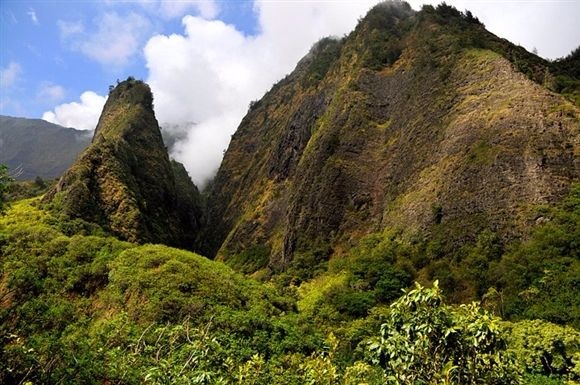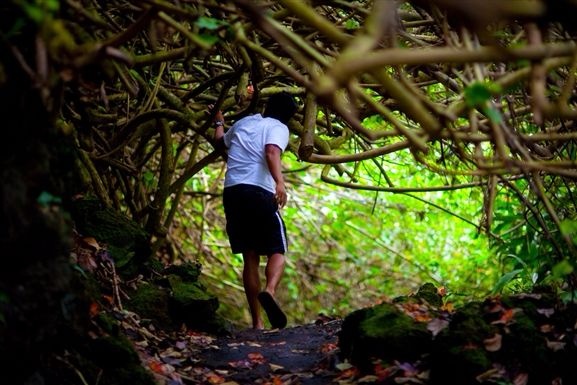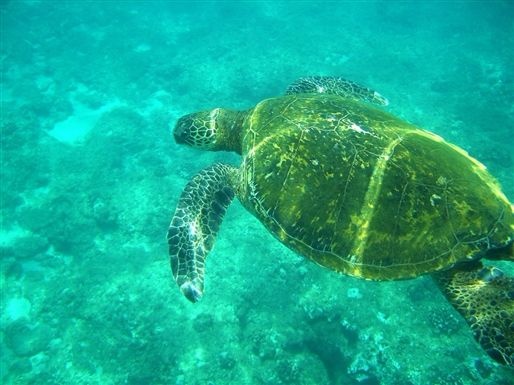
Maui is not nearly as large as theBig Island, nor is it as small asLanai, as bustling as Oahu or as quiet as Kauai. For many Hawaii vacationers, Maui is just right — offering a taste of just about everything the Aloha State has to offer, from impressive wildlife to intriguing history and culture. While on a visit here, you can shimmy alongside professional hula dancers, golf along coastal fairways, snorkel alongside five different types of sea turtles or simply lounge along some of Hawaii's most notable beaches.


One of the archipelago's most popular tourism spots, Maui can be found sandwiched between the Big Island and the much tinier Molokai. Maui is divided into five distinct regions: Many travelers base themselves along the coasts of South Maui (home to the famous Wailea Beach) or West Maui, where the sands of Kaanipali Beach and the music from the Old Lahaina Luauare located. But the rest of the island should not be missed. Travel along the Road to Hana to experience East Maui's scenic coastline, explore Haleakala — the world's largest dormant volcano — in the Upcountry, and explore the former tribal battlegrounds of Central Maui's Iao Valley State Park.


How To Save Money in Maui
Consider the busDriving is by far the easiest way to get around Maui, but if you plan on spending most of your time in one single area, you may be able to save on rental fees by relying on the bus. However, if you do decide to rent a car...
Know your insurance policySome car rental agencies will try to convince you that you'll need collision insurance. (This is a no-fault state where you'll have to pay any damages before leaving.) But your personal insurance or your credit card might already cover this.
Forgo the oceanviewIt's nice to look out at the ocean, but if you can wait to do so at the beach rather than from your room, you can save a considerable chunk of change.
Maui Culture & Customs
Maui is a great place to go if you're looking to learn more about Hawaii history and culture. In fact, legend has it that it was the demigod, Maui, who pulled the islands from the sea and lassoed the sun from the top of Haleakala. Travelers who are interested in learning more about island lore will have plenty of opportunities to do so: A visit to the scenic Iao Valley will offer a glimpse of the tumultuous era of tribal warfare, while a stroll through the small town of Lahaina will yield a glimpse of Hawaii's whaling, plantation and trade history.
Today, Maui is one of America's most popular vacation destinations — probably because it's so drastically different from any place on the mainland. Vacationers will find all the makings of contemporary luxury at the island's resorts, but outside the hotel areas, the relaxed "Aloha spirit" permeates. If you're looking to blend in with the locals, you simply need to loosen up: Pack T-shirts, shorts and flip-flops (as well as some light layers) for everyday wear and tone down the road rage (no honking here).
Folklore still plays a large role in day-to-day life, with residents paying tribute to various gods and goddesses in a number of ways — most notably hula dancing. Although visitors to the island see hula performances as entertainment, they are also a type of prayer and should be respected.
Other cultural traditions continue to influence everyday life in Maui, one of the most noticable being language. Unlike many other states, Hawaii has two official languages: English and Hawaiian, which is a member of the Polynesian language family. Though you won't have any trouble finding English-speakers, you'll benefit from learning a few basic Hawaiian phrases; "Aloha" means both "hello" and "goodbye," and "mahalo" means "thank you."
The arts are a mainstay on the island, with numerous festivals — like the one held twice a month in Lahaina's Banyan Tree Park — showcasing works by regional craftspeople. And throughout the year, Maui honors its vibrant culture through events like the Maui Steel Guitar Festival and the East Maui Taro Festival (both held in April).
If you're more interested in discovering Maui's natural wonders than its heritage, you'll find plenty of places to do so — from flower-filled jungles to underwater reefs teeming with aquatic life. However, it's important that you leave the island as you found it. Resist the urge to collect living souvenirs or to have a one-on-one encounter with local wildlife, as these could result in hefty fines or even jail time.
Maui Dining
Maui is quickly earning a reputation as a foodie destination: The island's restaurant scene is as diverse as its visitors with restaurants serving food from around the world. But as long as you're here, you may as well get a taste of the local cuisine.
Like the rest of America, Maui is on board with the local food movement — here, you'll find plates piled high with freshly caught fish and regional produce. To find these ingredients prepared in the island way, you'll want to stray from resort-heavy areas. Maui's towns (and its countryside) brim with local mom-and-pop joints serving such specialties as pork roasted in banana leaves, poi (ground taro root) and haupia, a creamy coconut custard. If you're not quite sure where to start your culinary tour, ask some local residents for recommendations.
One very popular — and very economical — way to get your fill of Hawaiian cuisine is to eat big around noon. Many local eateries served what's called a "plate lunch," which comes piled high with some sort of protein (usually beef, pork or fish), rice and/or macaroni salad and some sort of pickled vegetable. This tradition formed on the sugar plantations, where workers would gather for lunch and share their food. Today, it's common to see residents and visitors alike chowing down on the mountainous servings dished out by plate lunch restaurants and stands.



